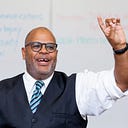Member-only story
New Orleans needs a Black philanthropy second line
There are few things that bring me unfettered joy like a second line. I’m a native New Orleanian, raised in Tremé, so it’s hard for me to resist the blaring horns, jazzy-funky drums and a sea of Black folks letting their minds be free with the coldest footwork you’ll ever see. With second lines, you can just see the mental health boost that everyone gets, especially in a city where there are constant stressors. Second lines create a sense of community, they celebrate the human spirit and they serve as a true expression of culture, helping New Orleans remain a truly unique and special place.
There’s another really cool thing that I love about second lines. They pull an interesting spirit of giving out of folks. When the rhythm hits you and your feet force you into the street, you want to invite everyone that you know to join in. So, it’s not uncommon to see a second liner take a wallflower’s hand and coax them to join the fun.
So, what if second lines were philanthropy? Man…we could fill a lot of community needs in New Orleans.
We just celebrated Black Philanthropy Month. Every August, we recognize philanthropic traditions throughout the African diaspora, but philanthropy is about more than giving for the sake of giving. My philanthropy mentor and wife, Dr. Halima Leak Francis, researched philanthropy as part of her doctoral dissertation on fundraising capacity building at HBCUs (Historically Black Colleges and Universities). Realizing that I, like so many Black folks, need…
